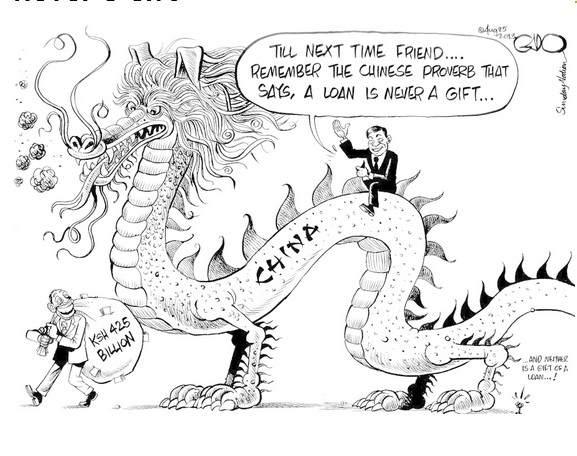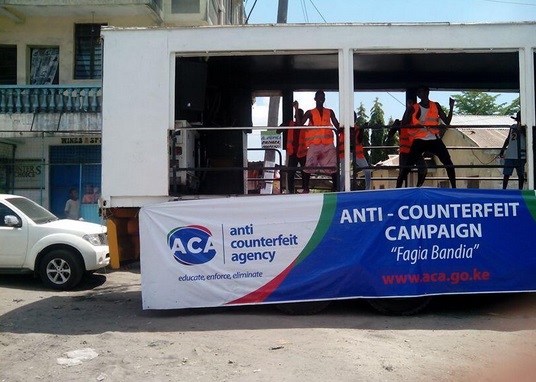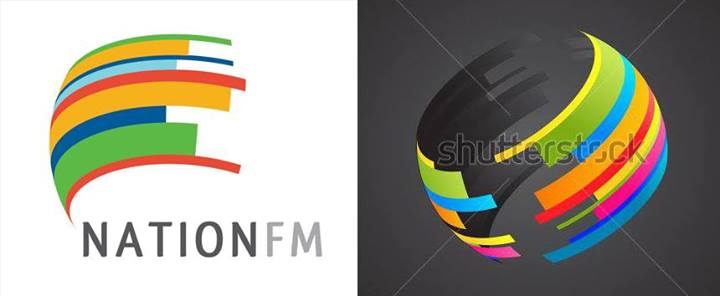
The major story in Kenya this week was the visit by Chinese Prime Minister Li Keqiang to Kenya, accompanied by a 500-member delegation. During this visit, it is reported that Kenya signed 17 multi-billion shillings deals with China including grants of Sh 18.6 billion and loans of Sh 146.8 billion – totaling Sh 165.5 billion. This blogger can only hope that some of these funds will be directed towards promotion of Kenyans’ intellectual property (IP) with our Chinese trading partners as well as strengthening IP enforcement mechanisms throughout Kenya’s land, air and sea boundaries.
As always, your comments are invited on this week’s commentaries on the JB Maina-Safaricom settlement (see here) and WIPO’s new 6-year strategic direction (see here). What follows is our brief commentary on some of the other IP-related news from this week:
IP Boss Sent Home Over Illicit Liquor

Media reports indicate that the Acting CEO of the Anti Counterfeit Agency (ACA) was among 52 public officers sent home by the Cabinet Secretary for the Interior as a result of killer brews that have claimed the lives of over 100 Kenyans. It is reported that the ACA CEO Dr. John Akoten was axed for ACA’s “failure to enforce standards and regulations” thereby ” allowing the counterfeit to trade”.
A quick glance at the Kenya Anti-Counterfeit Act 2008 which establishes the ACA reveals that the tough-talking Cabinet Secretary may not have been too far off the mark in sending Akoten home. Section 5 of the Act lists the functions of ACA which include to “combat counterfeiting, trade and other dealings in counterfeit goods in Kenya” as well as to “coordinate with national organisations involved in combatting counterfeiting”.
Raising Intellectual Property Awareness in Africa: A Call to Action by Kenya’s Top Ambassador

In this month’s World Intellectual Property Organisation (WIPO) Magazine, there is an article by Dr. John O. Kakonge, Ambassador and Permanent Representative of Kenya to the United Nations in Geneva and the World Trade Organization (WTO). In this rather lack-lustre article titled: “Raising Intellectual Property Awareness in Africa: A Call to Action”, Kakonge merely advances the possible advantages of the IP system without providing any concrete action plans on the way forward. Kakonge’s piece is a largely descriptive account of the IP state of play in Africa, with examples such as the “Lion Lights” utility model in Kenya (See our commentary of this invention here). At the very least, one would have expected Kakonge to justify his continued present in Geneva by highlighting some of the steps made at the international level in bridging the IP awareness gap and his plans moving forward.
Image Rights in Kenya – The Case of Corazon

The tabloid Ghalfa! published a story of Corazon Kwamboka, a Kenyan plus-sized model, who claims that she was neither consulted nor paid by an American-based promoter who used one of her images on a promotional poster.
Corazon, who also happens to be a law graduate, is reported to have said as follows:
“This (sic) Americans be using my photos and not paying me any royalties… these are the things that make me wake up early to go to school, what makes me wanna become the best entertainment lawyer.. to defend myself and everyone (sic) model out there.”
This interesting case was brought to our attention by @iruten, who comments:
“Funny interaction about a serious matter. I would say they are both right but that the model is much “more right”. There isn’t a law for privacy (yet) in Kenya (although the Constitution provides it) but she could sue for unjust enrichment or potentially other tort grounds.”
From an IP perspective, Corazon would have a strong cause of action under copyright law if the photo in question was her commissioned work or if she and the photographer in question had agreed to share jointly in the proceeds of any commercial exploitation of the photo.
In case you missed it…
1. The Kenya Industrial Property Institute (KIPI) announced that it has decided to discontinue the carrying out of substantive examinations in relation to utility model (UM) applications with effect from 1 May 2014 in order to align the practice with the Industrial Property Act, 2001. However, UM applications shall continue to be subject to examination for compliance with all the other requirements of the Act and Regulations. In particular, UM applications shall be examined for compliance with filing date and formality requirements as well as for inventions that are excluded from protection and for non-patentable inventions under sections 21(3) and 26 respectively.
2. The Kenya Copyright Board (KECOBO) introduced a declaration section in the application form for copyright registration. According to this disclaimer, all applicants are required to certify that they have been sufficiently informed about copyright registration, including:-
a) that copyright protection does not protect any ideas, concepts, phrases or slogans that may be contained in their applications for registration
b) that copyright registration system in Kenya is a voluntary system of notification
c) that registration of a copyright work does not prevent other persons who create similar works independently from marketing or practicing the idea contained in the copyright work and furthermore that it is the applicant’s sole responsibility to initiate any civil or criminal action for infringement of its work once registered
d) that registration by KECOBO does not constitute an endorsement of the work or efficacy of the business practices or confirmation of authorship by the applicant.
e) that the registration certificate should not be used for unlawful purposes and that the applicant is solely responsible for any liability arising from actions or use of the certificate that were not intended by law.
And finally…
As many of you may have noticed, Nation Media Group recently rebranded its radio station “Easy FM”. “Easy FM” is now known as “Nation FM”. However, questions over the originality (or lack thereof) of Nation FM’s logo have surfaced. Here is a side-by-side comparison between the Nation FM logo and an image from Shutterstock:

You be the judge!